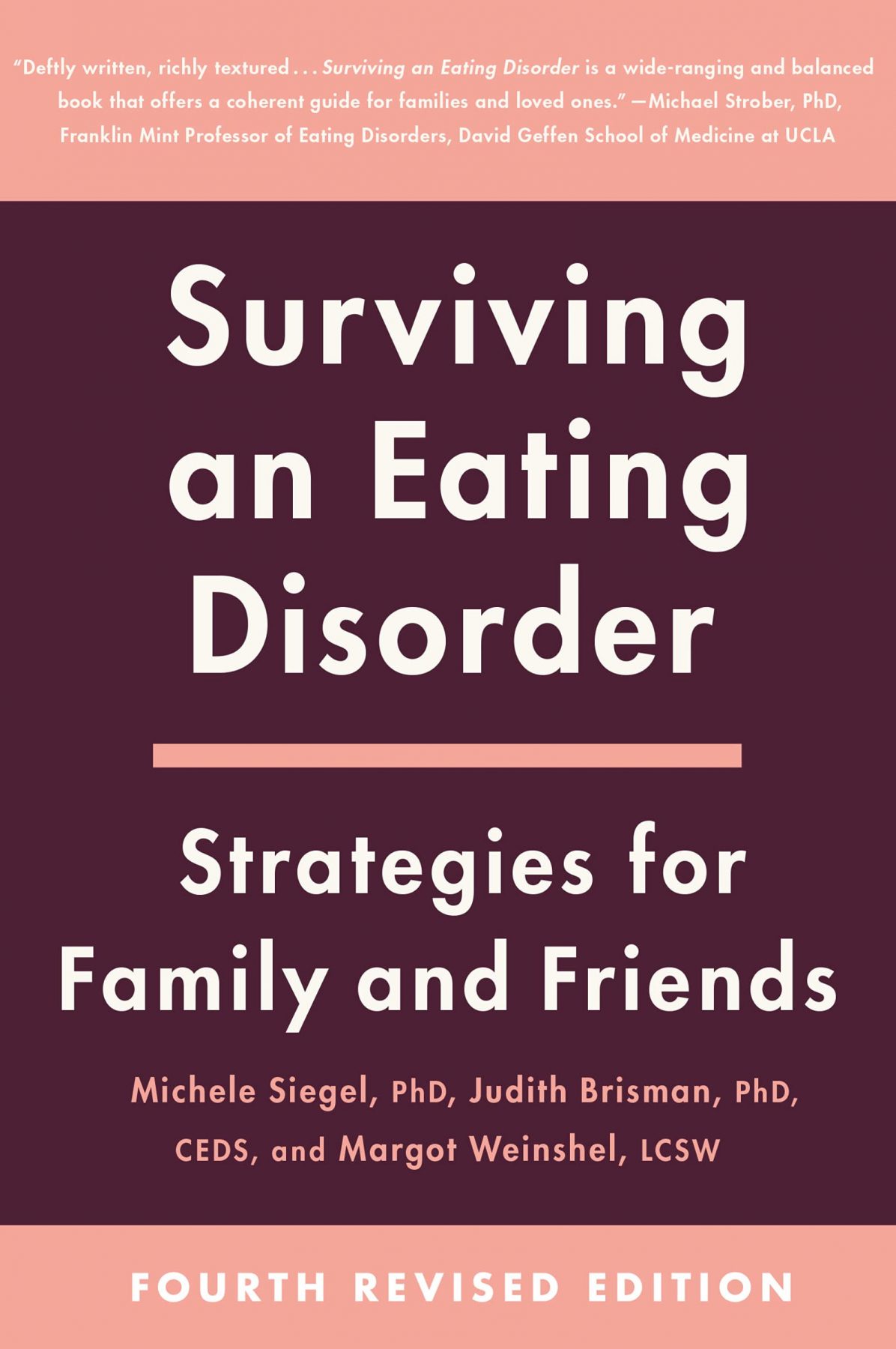
Surviving an Eating Disorder: Strategies for Family and Friends.
4th Revised Edition.
(By Michele Siegel PhD, Judith Brisman PhD, CEDS, and Margot Weishel LCSW. Harper Perennial, 320 pages, paperback, $15.99)
Now in its fourth edition, Surviving an Eating Disorder: Strategies for Family and Friends offers advice, hope, and helpful strategies for coping effectively with a loved one’s eating disorder. Books written explicitly for family and friends of those with eating issues are a much-needed resource and are too often neglected in the treatment world. The authors, Judith Brisman, Margot Weinshel, and the late Michele Siegel (who initiated the idea for the book and whose influence remains throughout this iteration), immediately create a compassionate setting, sympathizing with the helplessness and confusion that parents, partners, and friends feel. They write, “Yours is a difficult position to be in. You want to help, but you’re not sure what is best…this book is written for you.” With each chapter, the book offers a touchstone with which to navigate the depths that are required when caring for someone with an eating disorder.
Divided into three parts, the book offers a wealth of practical information about eating disorders. “Part I. Gaining Perspective,” is an introduction to eating disorders, explaining essential features, signs and symptoms, and why an individual may be vulnerable to anorexia nervosa, bulimia nervosa, binge eating disorder, orthorexia, and avoidant restrictive food intake, or ARFID. Particularly helpful are checklists of warning signs and symptoms of each illness. Parents will appreciate the clarity the checklists provide. The authors explore the function of eating disorders, noting how they are often an external solution to inner turmoil. Paying attention to both the “visible and invisible,” the authors note, is necessary for someone with an eating disorder to be treated as a whole person. Part I closes with a discussion of family rules, with the hopeful message that an eating disorder is an opportunity to increase flexibility and growth in a family system.
“Part II. Confronting the Problem” offers guidance on how to discuss an eating disorder with a loved one. The authors teach communication strategies to increase the likelihood that confrontations about eating disorders are solution-focused and do not end in a stalemate. Especially helpful is advice about how to deal with denial or being told to “mind your own business.” The authors recommend involving an eating disorder specialist and offer specific strategies for parents, partners, adult children, and friends to use when the individual with the eating disorder believes that nothing is wrong. Suggestions to get an individual to accept help include having an open talk about what is observed, focusing on the emotional impact of the behavior, and staying firm that help is needed. This section also includes a discussion of the Relationship Model, an alternative approach to engaging parents in the treatment of their anorexic child, which differs from Family-Based Treatment in that parents do not directly feed the child. Working with a multidisciplinary team, this model encourages parents to set up and enforce clear and realistic consequences if weekly weights gain goals are not met, with therapists providing support to parents regarding limit setting. In addition to weight interventions, the focus is on family communication and connection, and relational dynamics are explored. Taking the task of refeeding out of the hands of the parents “allows for other means of both authority and support to be set up” and may work better when parental re-feeding is stressful or ineffective.
“Part III. Using New Strategies” offers advice, often in the form of questions and answers, for dealing with specific problems with food, eating, finances, and body image. Individuals with eating disorders are encouraged to take responsibility for the consequences of disordered eating behaviors, be that cleaning a messy bathroom or replacing food consumed in a binge. How to deal with a multitude of tricky situations, such as talking to a partner about the impact of his weight gain on sexual attraction, responding to “Am I too fat?” queries, and dealing tactfully with comments from relatives about a child’s body size are all covered in this section of the book. The book concludes with a chapter reminding readers to relate to the person, not just the eating disorder, as this will best help “pave the way for the possibility of recovery– for everyone involved.”
The fourth edition of Surviving an Eating Disorder: Strategies for Family and Friends has a welcome emphasis on diversity and inclusion, and diversity in sexuality, gender, and body size are well represented. Eating disorders themselves can be diverse and can include severe and enduring cases for which no amount of intervention is successful. Acknowledging the powerlessness that family members feel and encouraging acceptance of limitations will be a healing message to many with an adult son or daughter with chronic anorexia nervosa. The book also offers general information about raising children with a healthy relationship to food, as well as tips for effective communication and parenting skills. Readers will appreciate the first-person vignettes offered on each topic, as well as the authors’ reflections on past clients and family dynamics. First published 30 years ago, this book remains a classic, and is a must-read for anyone who cares for someone with an eating disorder.
– Kamila Cass PhD, CEDS-S
[Dr. Cass is Clinical Psychologist, Certified Eating Disorder Specialist (Supervisor), and Assistant Professor at the University of Colorado School of Medicine, Denver.]

